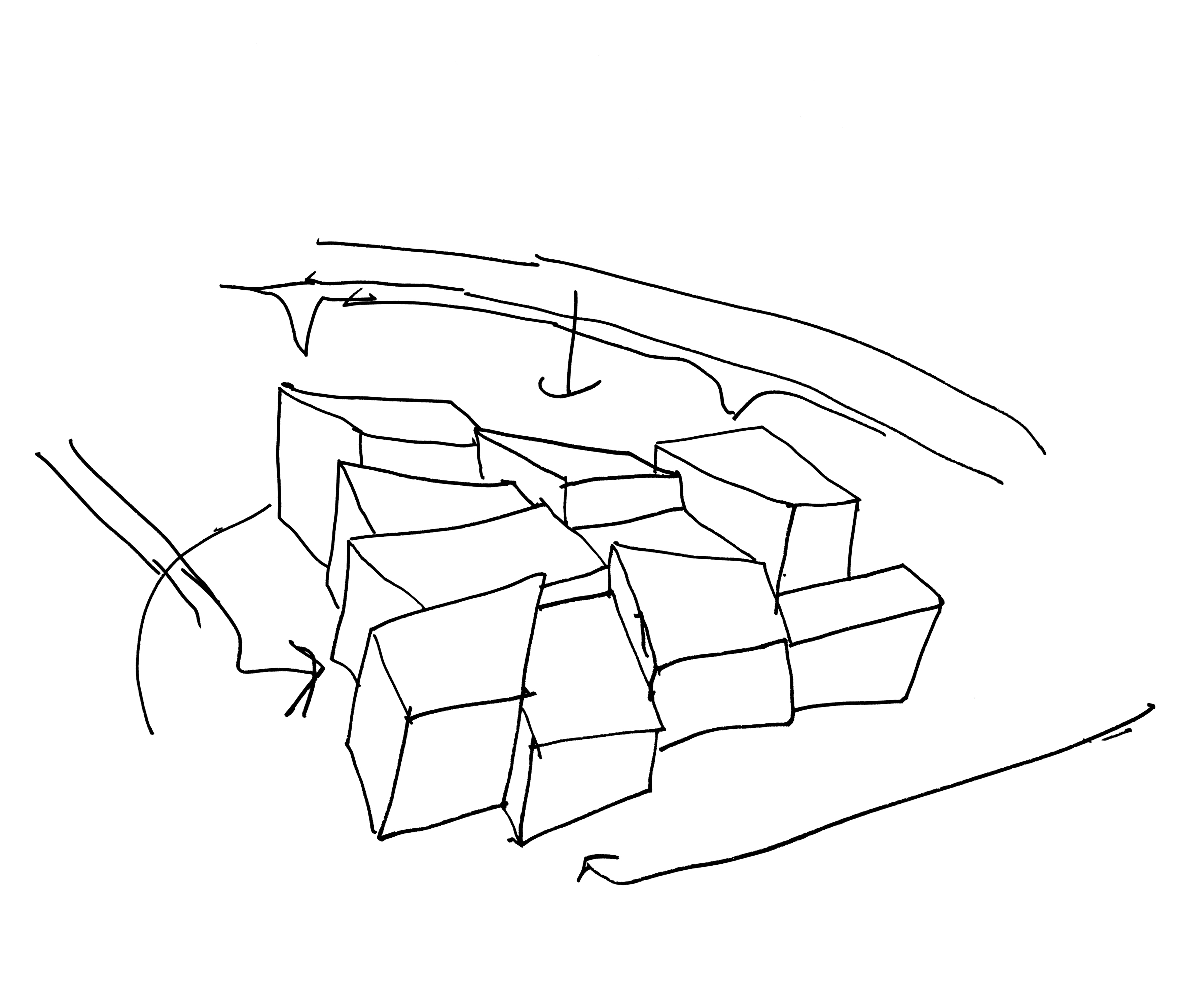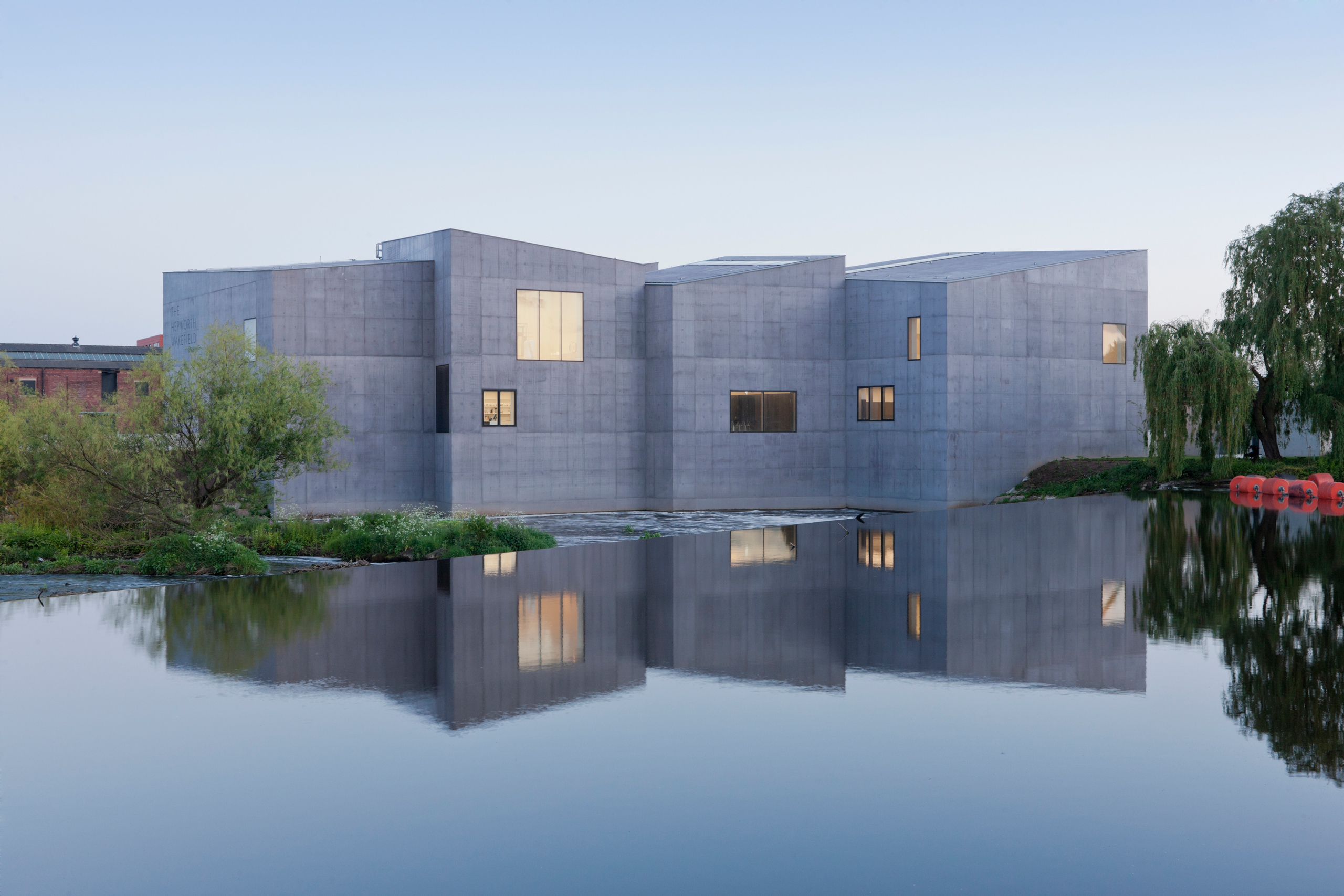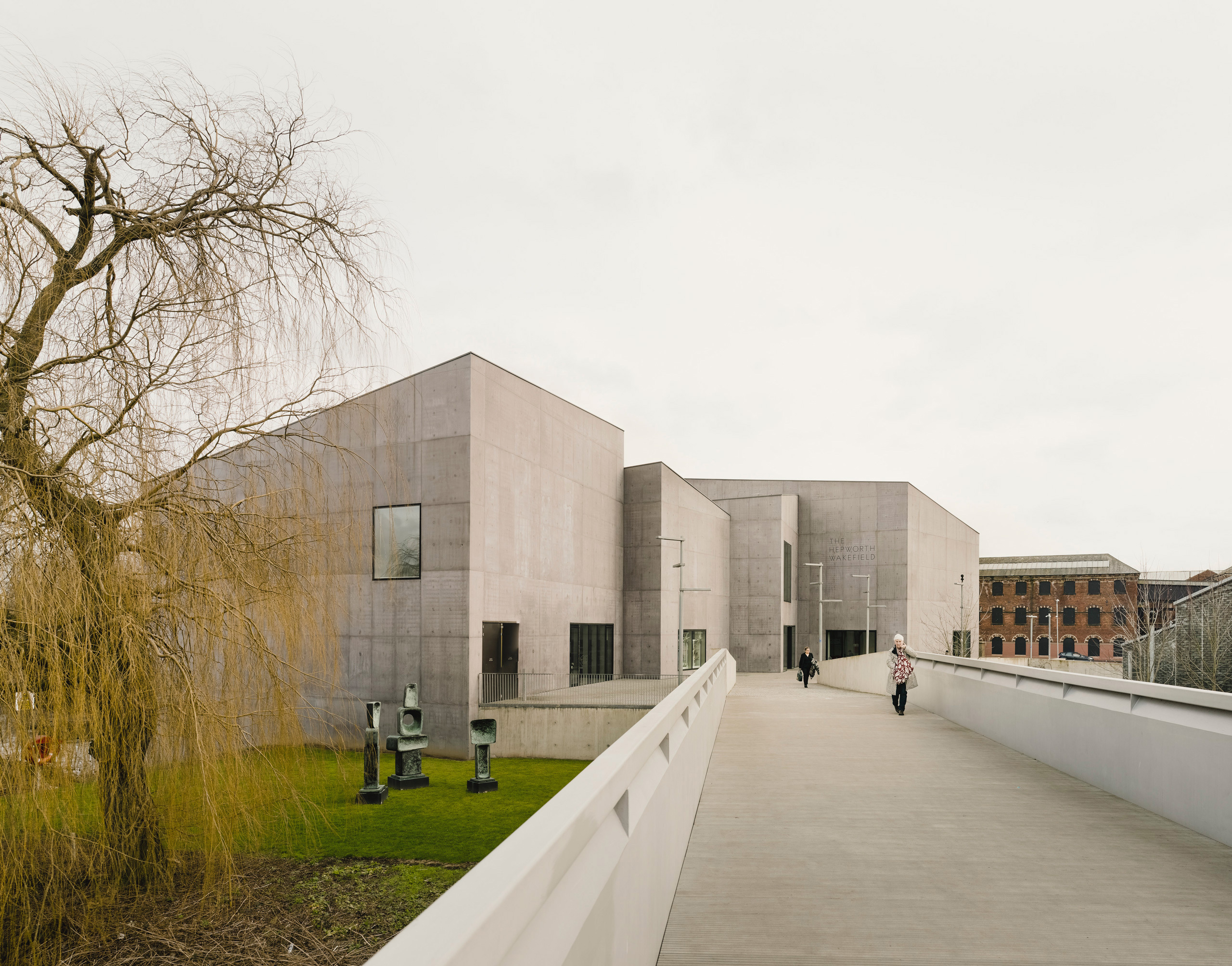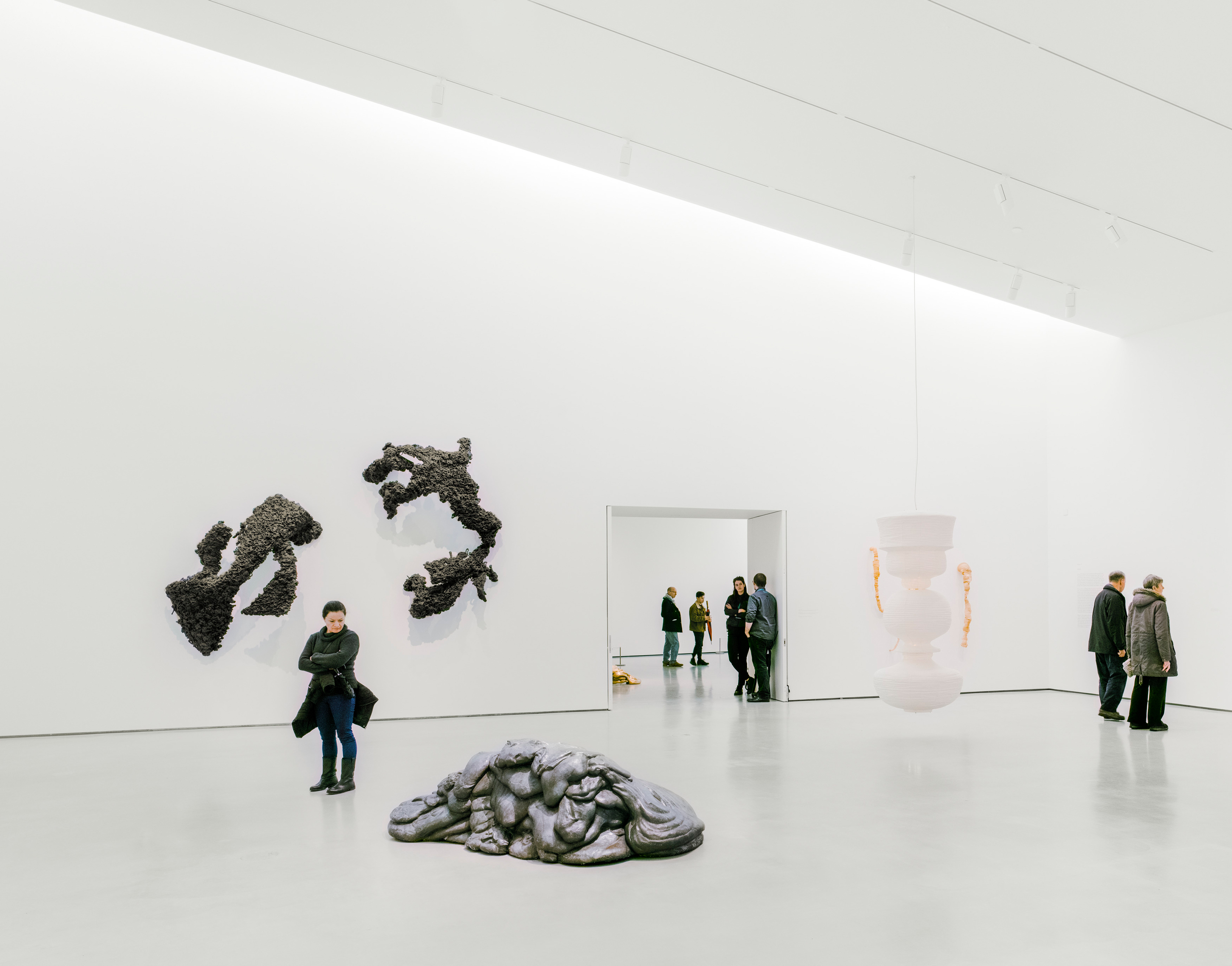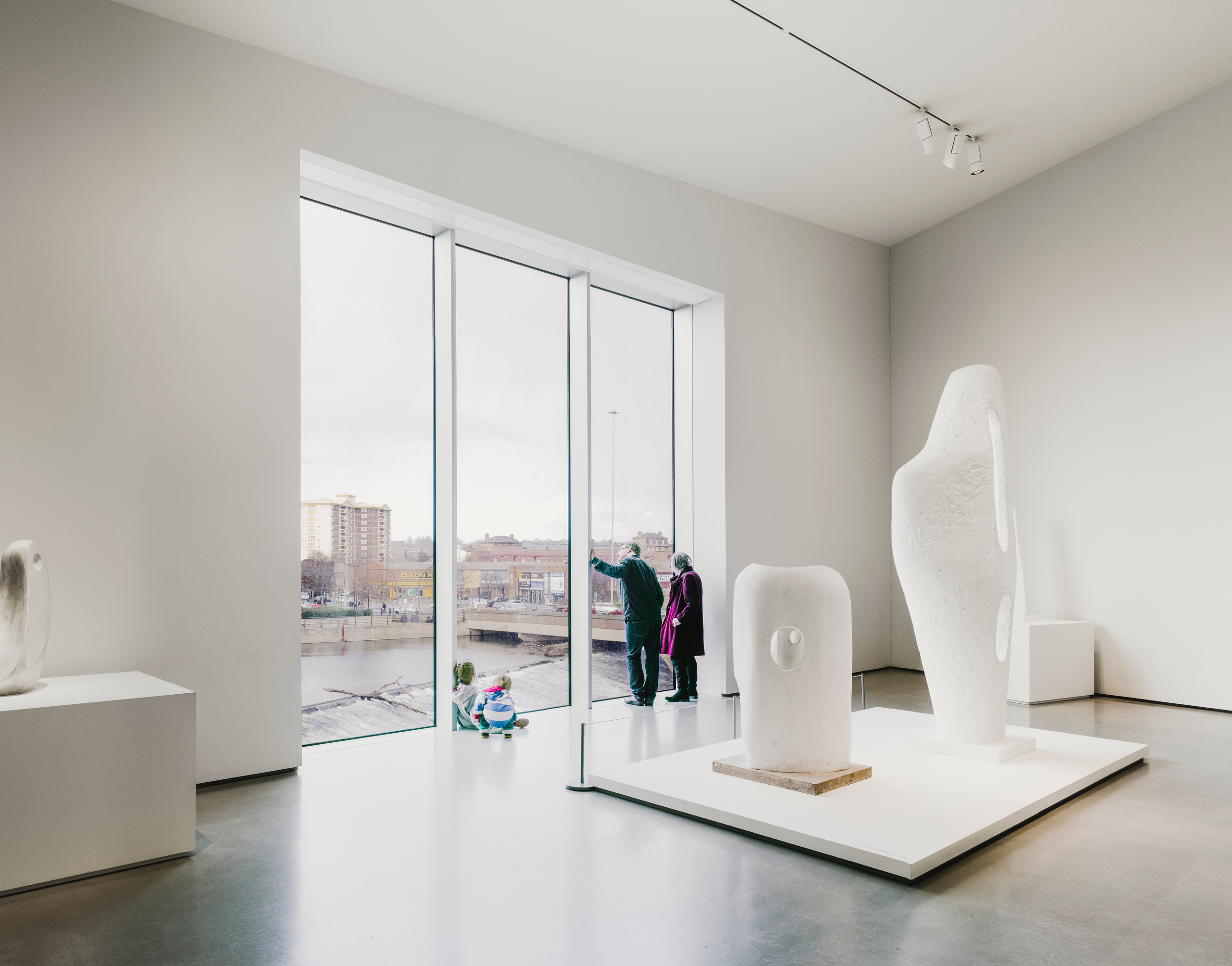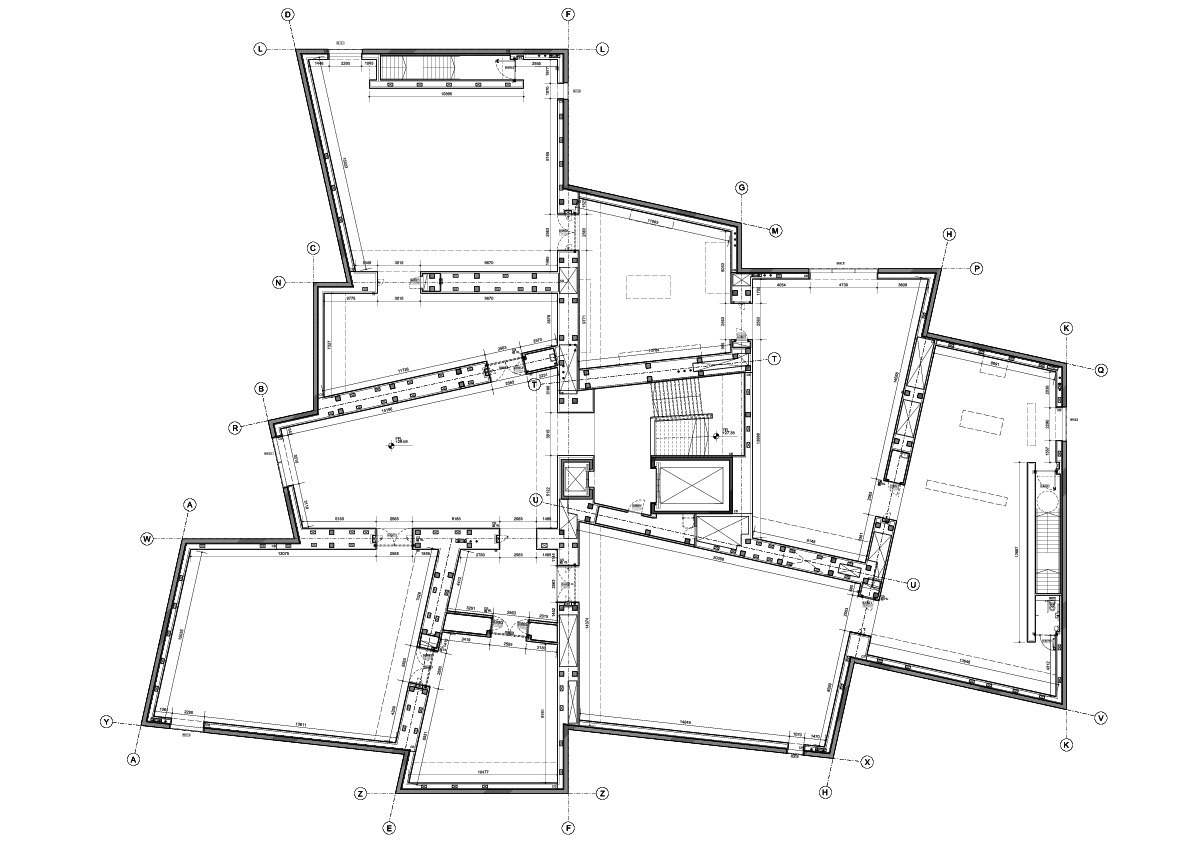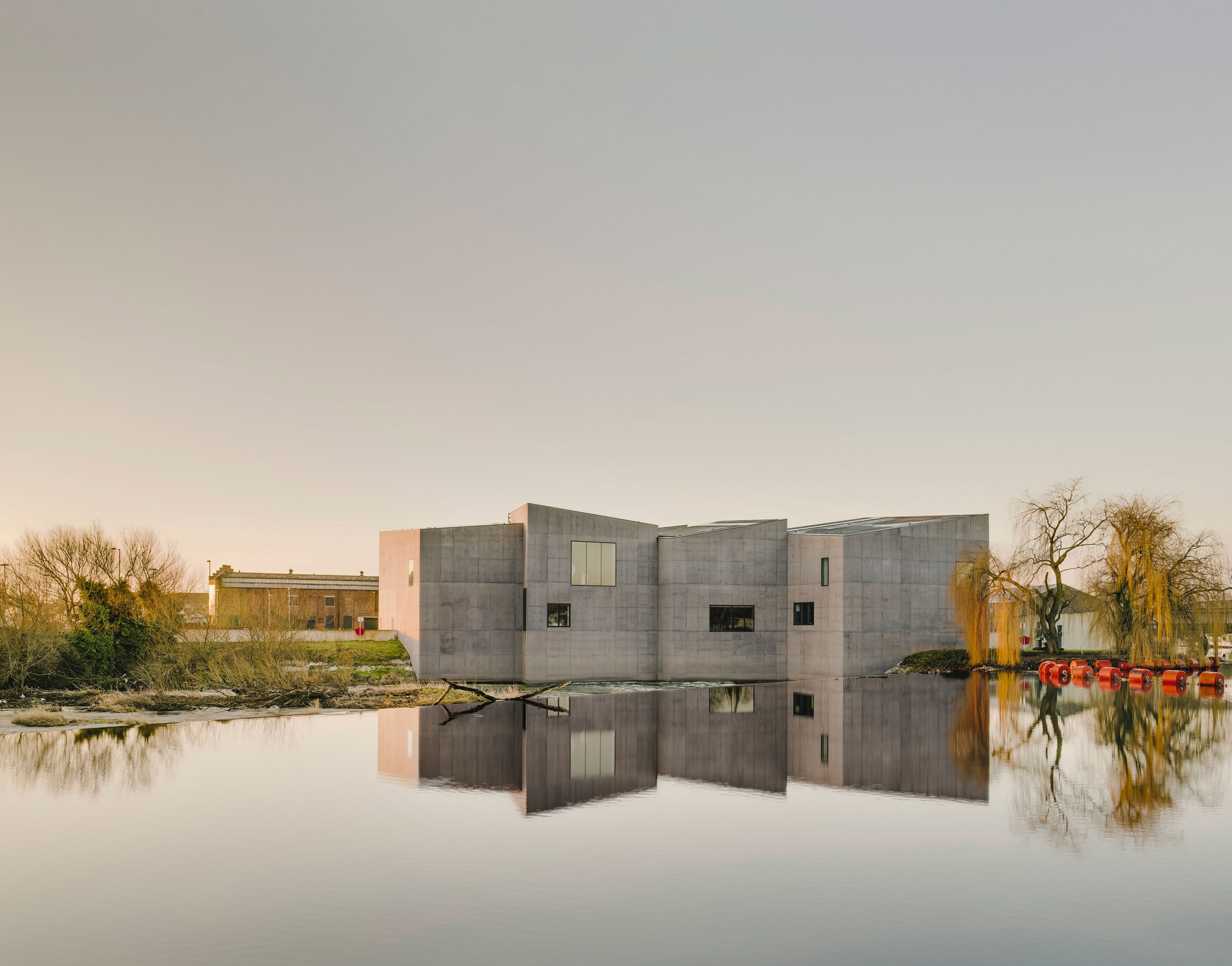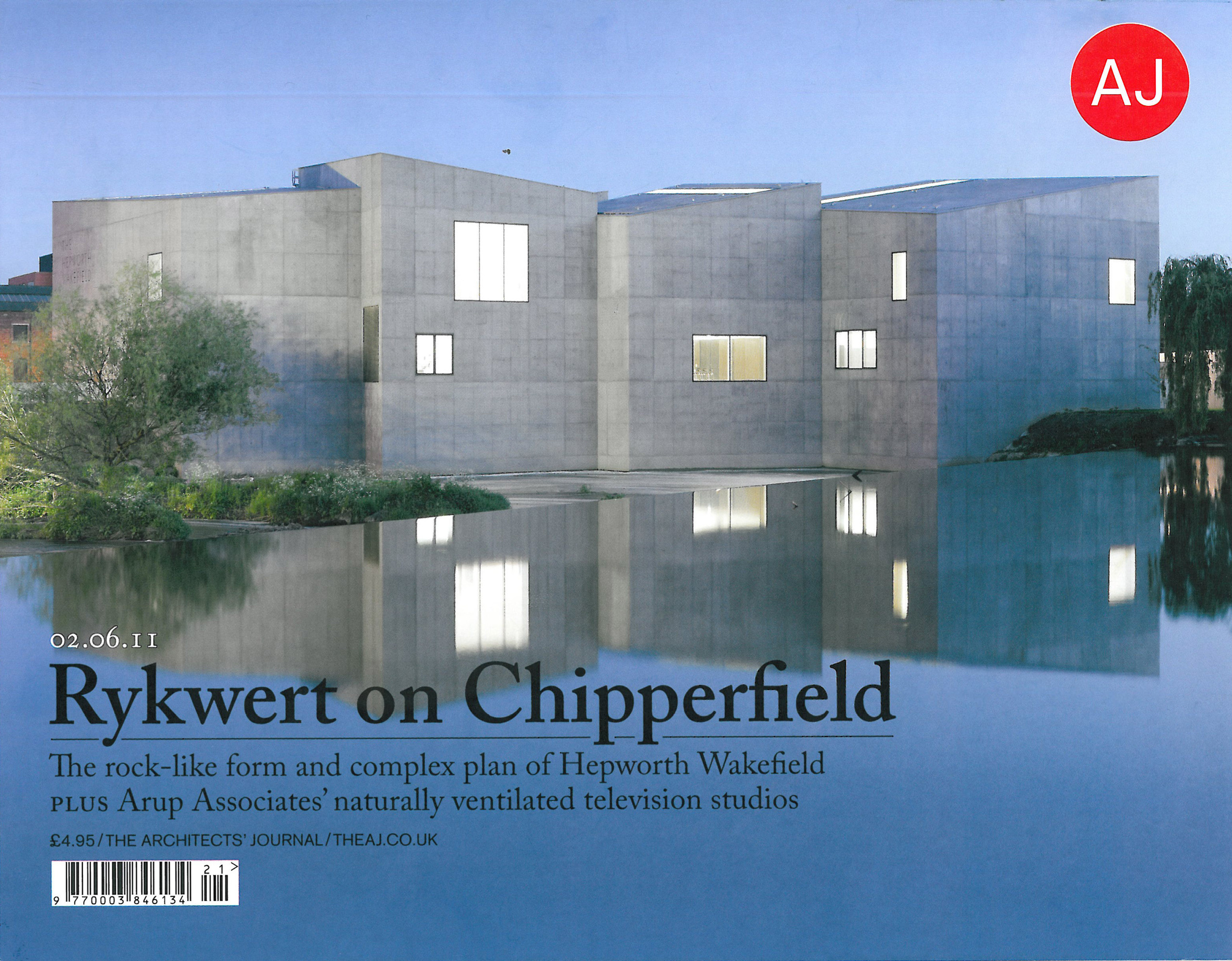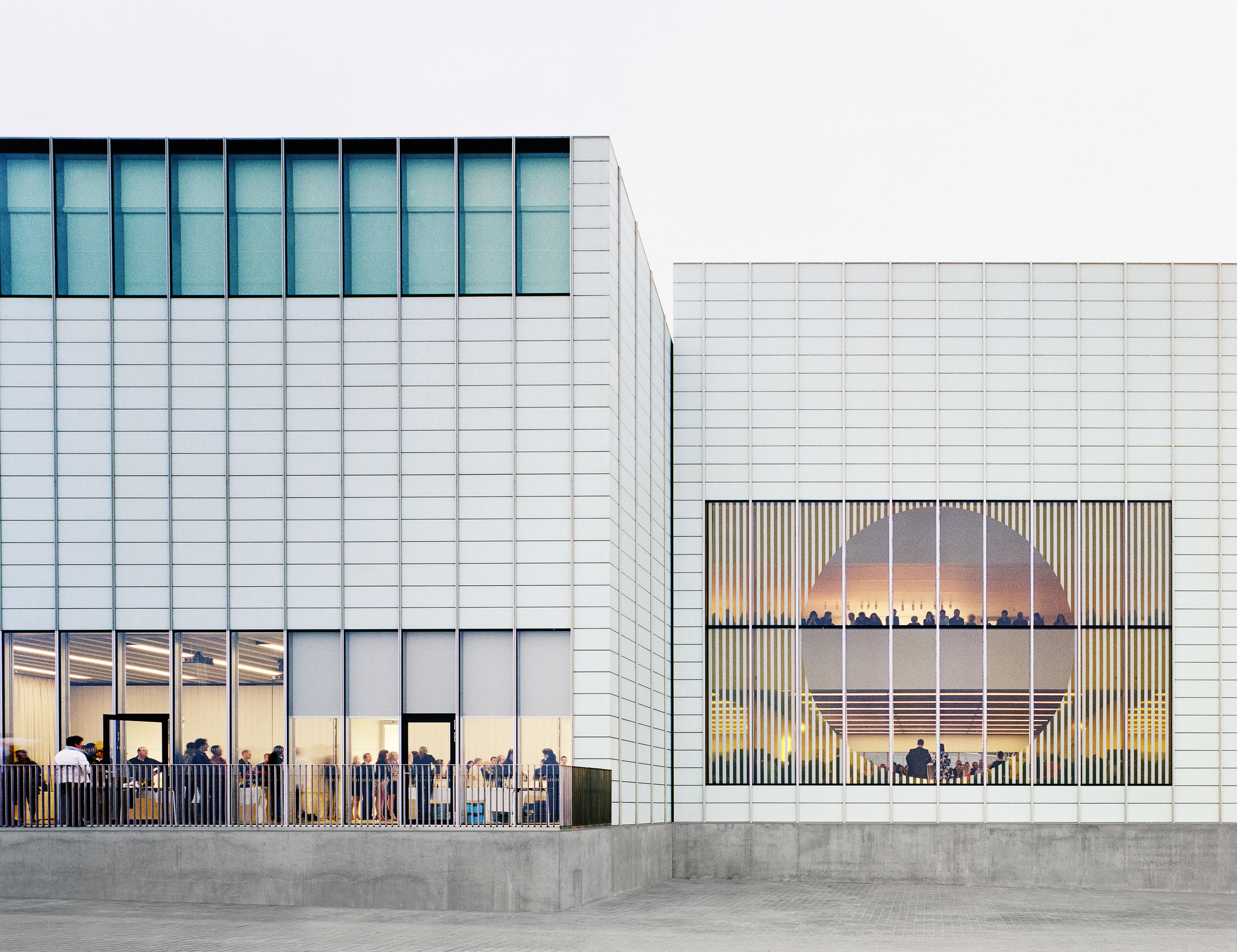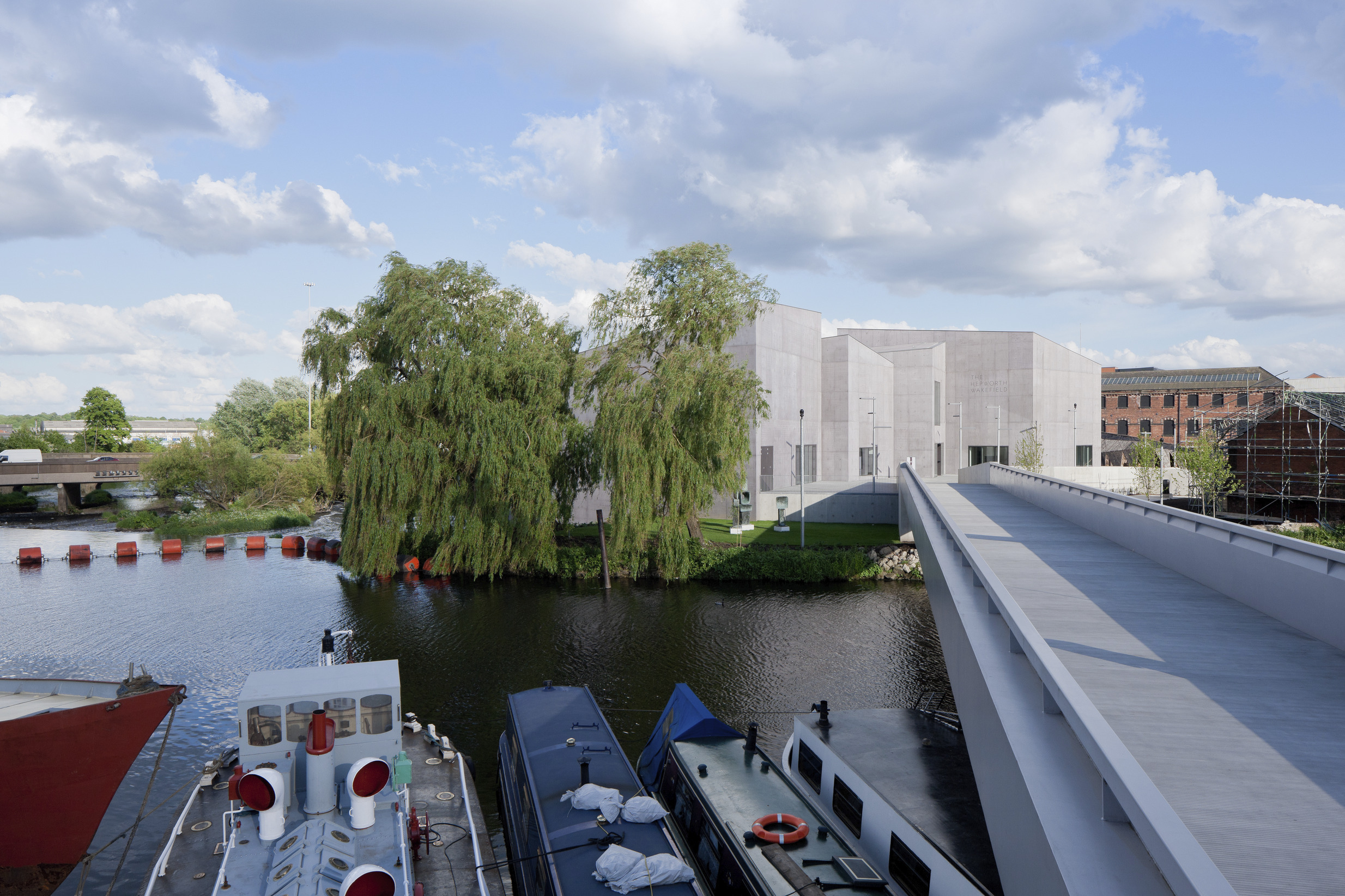The Hepworth Wakefield
West Yorkshire, UK
2003–11
The Hepworth Wakefield is a purpose-built art gallery named after the late English artist Barbara Hepworth, who was born in Wakefield in 1903. It is the successor to the Wakefield Art Gallery which was founded in 1934 and became one of the most forward-thinking institutions in the country. Since opening, the new gallery has built on this tradition by providing facilities to display the collection, continuing to support contemporary artists and establishing a thriving programme of community-focussed events and activities. This was recognised when The Hepworth Wakefield received the UK’s Museum of the Year Award 2017.
The building is located on a headland site on the River Calder and within the Wakefield Waterfront conservation area which protects several significant industrial buildings that once housed the town’s cloth and grain industries. Addressing its complex surrounding context, which includes a neighbouring twentieth century road bridge, the building has no dominant façade. The almost geological composition comprises several staggered volumes that are tightly interlocked and respond to the headland setting. Each volume is unique in size and shape and represents a single space. The building is formed of in-situ concrete, giving it a monolithic robustness suitable for its exposed site and on the river side it steps into the water in a similar fashion to the old mills and warehouses nearby.
The programme is split horizontally between the ground and first floors. The ground floor contains the reception, shop, cafeteria, auditorium and learning studios, as well as offices, archives and storage. The cafeteria has a generous terrace near the main reception area and all public areas enjoy exterior views. At the core of the building is a naturally lit central staircase leading to the galleries on the upper floor.
Most of the rooms on the upper level house the gallery’s permanent collections, which range from large-scale sculptures and plasters by Barbara Hepworth and others, to highly light-sensitive works on paper from the city of Wakefield’s collection of British art. The remaining rooms host a programme of temporary exhibitions. Open doorways link the gallery spaces into fluid and varied sequences, offering inviting glimpses of other works and the outside world.
From within the individual blocks, the outer form can be clearly seen. Walls meet at diverse angles, and the variations in size and ceiling pitch give each room a unique character. A slot running the full width of the ceiling in each gallery admits and diffuses light, complementing the artificial lighting. Louvres allow the light to be regulated or even completely blocked out. In addition, several of the galleries feature a large picture window framing an aspect of the surroundings, linking Hepworth’s sculptures to the landscape in which she grew up.
Data and credits
- Project start
- 2003
- Project completion
- 2011
- Gross floor area
- 5,200m²
- Client
- Wakefield Council
- User
- The Hepworth Wakefield
- Architect
- David Chipperfield Architects London
- Directors
- David Chipperfield, Oliver Ulmer
- Project architects
- Demian Erbar, Nick Hill, Kelvin Jones
- Project team
- Julie Bauer, Yael Brosilovski, Katrin Bruenjes, Paul Crosby, Jesús Donaire, Corina Ebeling, John Puttick, Claudia Faust, Jason Good, David Gutman, Ilona Klockenbusch, Daniel Koo, Laurent Masmonteil, Hau Ming Tse, Stephen Molloy, Hiroshi Nagata, Anna Naumann, Sabine Piechotta, Dean Pike, Billy Prendergast, Declan Scullion, Pierre Swanepoel, Korinna Thielen, Steffi Wedde, Jose Bergua
- Landscape architect
- Gross Max
- Structural engineer
- Ramboll UK
- Services engineer
- Ramboll UK
- Facade consultant
- Ramboll UK
- Lighting consultant
- Arup
- Theatre consultant
- Charcoalblue
- Accoustic consultant
- Paul Gillieron Acoustic Design
- Fire consultant
- Safe Consulting
- Access consultant
- Jane Toplis Associates
- Project management
- Turner & Townsend
- Quantity surveyor
- Turner & Townsend
- General contractor
- Laing O'Rourke Northern Limited
- Graphics
- APFEL
- Fit out contractor
- Realm Projects
- Exhibitions contractor
- Wood Mitchell; Museums Technik
- Photography
- Iwan Baan; Simon Menges
- Selected Awards
- Art Fund Museum of the Year 2017
RIBA National Award 2012
Wallpaper Design Award, Category Best New Public Building 2012
Civic Trust Award 2012
RICS Pro Yorkshire Property Awards, Category Project of the Year 2012
Conde Nast Traveller Innovation and Design Award, Category Culture 2011
- Links
- hepworthwakefield.org


